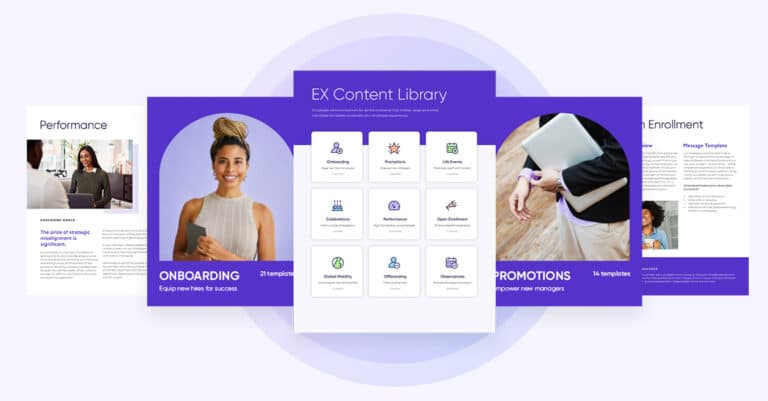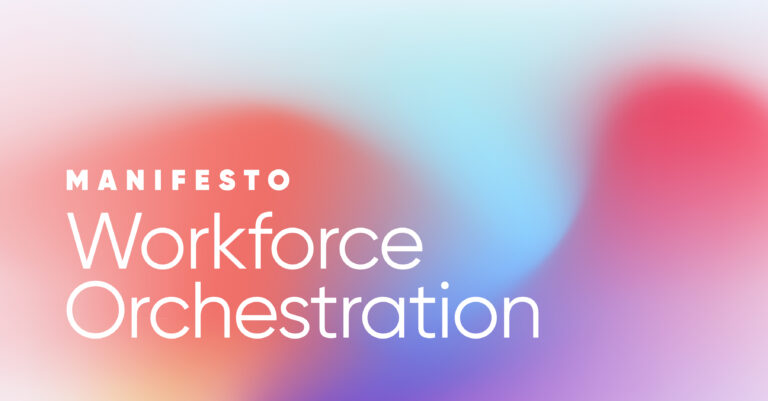It’s become normal to talk about everyday business challenges as though they’re real emergencies. We spend all day “putting out fires” or dealing with an “HR disaster.” However, at some point, every company will face an actual, large-scale crisis of some kind.
The crisis might be a natural disaster, security breach, media scandal, pandemic, or act of terrorism. You won’t know what it is until it happens—which is exactly why you want to prepare your crisis communications in advance.
What is crisis communication?
Crisis communication refers to the processes and protocols taken by a company’s internal crisis communications team to create a plan that disseminates information to the people affected. In any crisis, proper communication is key to keeping people calm, organized, and safe. How you handle a crisis will have a big impact on your employees, your company, and your brand reputation.
Organizations have to prepare crisis communication for numerous potential disasters, and preparing in advance provides appropriate personnel with an efficient way and means to communicate quickly when an incident occurs. This helps the company to quickly correct the situation, protect customers, workers, and property, and maintain business continuity.

The importance of crisis management
Crisis communications and crisis management are very important because they have consequences for your business, your employees, and your brand. Preparing ahead of time can lessen the impact of a crisis for everyone involved, and provide for business continuity, if necessary.
When a crisis occurs, you will need to:
- Move quickly. And in order to move quickly, it’s important to have a crisis management process in place!
- Consider internal and external stakeholders and groups (this may include customers, government officials, employees, survivors, family members, management, and news media).
- Keep your messaging consistent, but do not necessarily present all messages in the same way. Also, have follow-up crisis messages pre-drafted, if possible.
- Be honest, and communicate in the way you would want to be communicated with if you were in their situation.
- Stay calm, even if it is difficult to do so.
Hyper-personalized comms for every employee
What is a crisis communication plan?
A crisis communication plan is a set of directives, prepared by leadership or a crisis communications team, for use in the event of an emergency or some other crisis situation. Here are three steps to help you develop a crisis communication plan of your own.
Step #1: Plan a crisis response strategy before a crisis occurs
Think about what could go wrong when you are building a crisis communication plan. Assemble a crisis management team and brainstorm a list of potential crises that could affect your company.
To help you get started, these crises may fall into several larger categories (information, criminal, natural disasters, economic, reputation, or product-related) but can point you in the right direction. Knowing what might happen can help you think about what you can do, and you may find steps you can take now to eliminate the risk of a crisis in the first place.
Next, determine how you’ll communicate with employees in a crisis situation. Communicating may include:
- Setting up special channels on your customized mobile app that can be activated at a moment’s notice,
- Drafting holding statements (crisis messages) so you aren’t preparing them when you should already be disseminating information,
- Choosing a point person for each scenario, and
- Setting up human resources and your crisis management team to be able to effectively communicate with employees.
Different employees consume content differently. Some employees will check email regularly, others only have access to their smartphones or tablets during work, and some may prefer a phone call or a notice on your intranet.
One method of communication will not be enough. You need to meet your employees where they are, and this includes having a crisis management plan in place in case your primary means of communication is not available.
Step #2: When a crisis occurs, plan to act quickly and strategically
In crisis situations, act quickly but strategically. In other words, don’t just jump into action without first pausing to make sure your information is as accurate as possible. The last thing you want to do is put out inaccurate messages during a crisis.
If you’ve done your crisis management process planning, you’ll be in an excellent position to respond quickly and start getting information out to employees even if you don’t have the exact answers. Remember, you want employees to trust the authority of your messaging, and not gather information from unreliable sources during a crisis situation.
Update them regularly so you know they consistently have the most up-to-date information. Instead of trying to stop them from sharing information, provide accurate information for them to share.
Draft a simple crisis message to employees that answers or addresses their most important questions to the best of your ability. As the crisis unfolds, adapt follow-up crisis messages as necessary and make sure employees know the situation is fluid. Your top priority should be to produce factual, consistent, and practical messaging in your crisis communications.
Learn how the Firstup intelligent communications platform will help you reach every worker instantly in an emergency and give them a place to go for accurate, updated information.
Step #3: Conduct a post-crisis communication analysis
Companies that have successfully navigated a crisis will often be anxious to move on. However, it is important to evaluate how the crisis communications plan worked.
Did all employees receive the necessary information? How many employees didn’t? Was your communication timely? Were you able to control the message? How did the communications perform?
After you evaluate how the plan worked, make adjustments and corrective actions for next time. Keep what worked well, and change whatever didn’t go as expected. This may include shifting how you communicate, updating and clarifying your crisis messaging, or eliminating anything that slowed you down or created unintended problems.
Include your employees in this process! They’ll be in the best position to tell you what worked and what didn’t, so take advantage. Try using a pulse survey in combination with communications performance data and insights.

What are the 5 Cs of crisis communication?
You have probably heard the phrase “5 Cs of communication”, but maybe you aren’t clear on exactly what they are because there are several different meanings when you search online for them, depending on what you are communicating about.
Here, we are going to discuss what we believe are the 5 Cs of crisis communications: Concern, Commitment, Competency, Clarity, and Confidence.
Each one of these is important to keep in mind as you build your crisis response plan and any appropriate response you may have when a crisis arises.
Concern
You may be representing a corporate entity, but that doesn’t mean you shouldn’t communicate empathy and concern when a crisis pops up. Humans respond better to real communication, not corporate speak. So when crafting your crisis communication, think like a human, not a company. Your crisis messages will resonate better with respondents and let them know there is some real concern about what may be going on.
Commitment
Proper crisis communication and crisis management mean committing to making a situation better, however you can, and making sure your audience knows you will see your efforts through to a resolution. In addition, if related to the company, be sure to communicate any longer-term adjustments you are making to your organization/personnel to avoid the crisis from happening again.
Competency
Whether it’s the health and safety of your employees, or your organization’s reputation, you need to make sure your audience knows you are and will be competently handling whatever crisis situation you are involved in. Doing so can help alleviate concerns both during and post-crisis, as the people you are communicating with can trust that everything is being done to make the situation better. It is a critical part of rebuilding trust among all stakeholders.
Clarity
In crisis communication, there is no room for assumptions or guesses. The crisis messages you send out to your people or your customers need to be crystal clear on what is happening, why it may happening, and what is going to be/should be done about it. In a crisis, you cannot get your messaging wrong, whether it’s about a natural disaster or a public relations nightmare.
Confidence
Have confidence in your crisis communication messages (yet another reason it pays to have a crisis management plan in place before a situation arises). Wishy-washy messages don’t help anyone, and you need to communicate with confidence in order to garner (and keep) the trust of those you are communicating with.

Crisis management: Focus on employees first
Although customers and public relations are important, your employees should be your first priority when it comes to crisis communication. If you don’t address their concerns, answer questions, and manage worries with pertinent information during a crisis, they’re likely to turn to other sources to get their information, and false or misleading information will only make things worse.
When you keep employees in the loop, they become vital partners in managing the crisis and helping the organization survive and thrive. With social media, employees will likely be communicating about a crisis, and what they say can have an extensive reach. Think of them as an extension of your public relations team in an emergency. This means whatever you tell them must be consistent and as accurate as possible, in order to minimize damage and not hinder your crisis management effort.
Conclusion
Pre, during, and post-crisis communication done well can set you apart from your competitors. Your workforce, and even the general public, will appreciate your efforts when a crisis hits.
Planning in advance your crisis management plan won’t go unnoticed by leadership and employees alike, and can help minimize damage to your reputation or, even more importantly, even help save the lives of your employees.
Learn how Dow Chemical reaches its employees day-to-day and during times of change effectively and efficiently with a multi-channel internal communications strategy.











